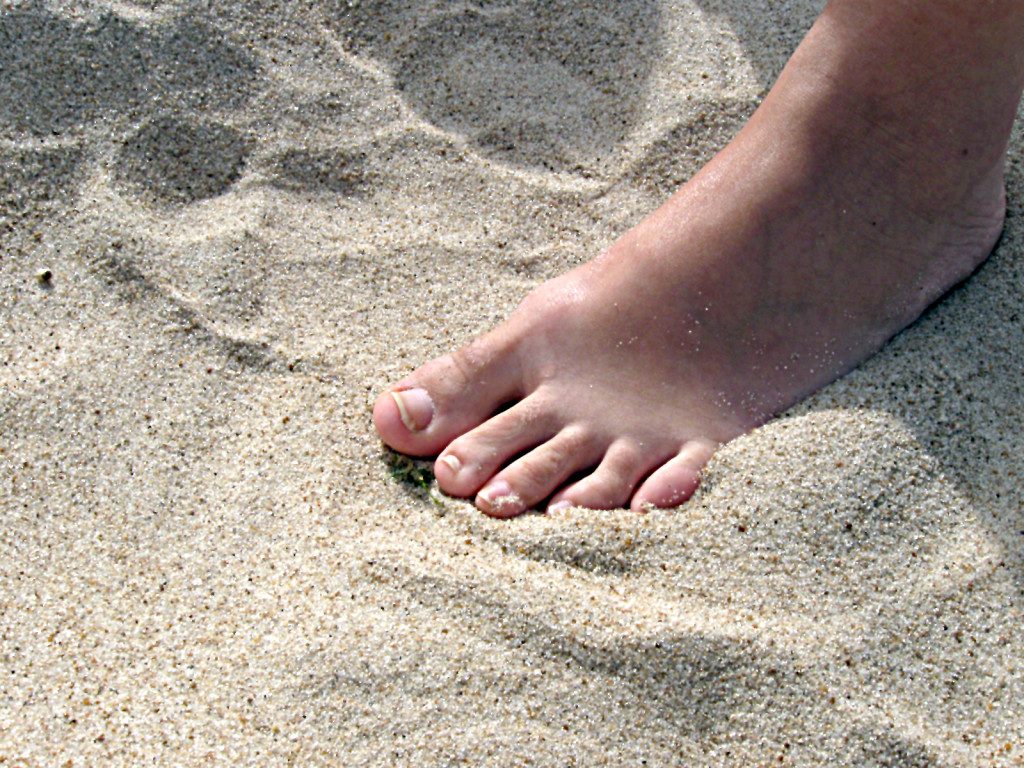06 Jun Plantar Fasciitis: When every steps hurts…
According to the American Podiatric Medical Association, the average person takes between 8,000 – 10,000 steps per day, bringing a force equal to several hundred tons on your feet! Under normal circumstances, our feet do this, day in, day out, without complaining. It’s only when they start to hurt that we start to notice them. When they do, it’s time to take a closer look and determine the cause of the pain. Left untreated, most foot ailments will degenerate and become more difficult to treat. The pain doesn’t usually go away on its own.
Plantar fasciitis is the most common cause of heel pain. Although the symptoms may first only appear in the heel, the condition affects far more than just the heel. Plantar fascia is a strong, thick, inelastic band of tissue which connects your heel bone to your toes. Healthy plantar fascia functions as a shock-absorbing bowstring to support the longitudinal arch of the foot. If you strain you plantar fascia, it gets weak, swollen and irritated, with or without inflammation.
Plantar fasciitis usually develops due to overuse and stress on the fascia. The connective tissue tires and the collagen degenerates, leading to tiny tears in the fascial band and its attachment at the calcaneous (heel bone), causing pain and swelling. Pre-disposing factors include: excess weight, pregnancy, walking, standing or running for long periods of time especially on hard surfaces, weak and/or foot and/or tight Achilles tendon and calf muscles (due to high heels), high arches or flat feet, excessive pronation or supination (feet rolling inward or outward), ill-fitting and inflexible shoes, just to name a few.
Typical symptoms for plantar fasciitis are intense, sharp, stabbing or burning pain upon taking the first steps when getting up in the morning or after sitting for a long time. The pain is due to the tearing of the new tissue developed during a period of rest. As the tissue warms up and stretches, the pain may change to a deeper duller ache in the middle of the heel bone. It may hurt more as the day goes on. Also it is more difficult to dorsi-flex the ankle and extend the toes.
How can you treat plantar fasciitis? In fact, there is no single treatment that works best for everyone, but there are numerous things you can do to relieve the pain and help your foot get better. Among them, rest and stop doing what aggravates it. Ice, stretch the arches, calves, hips, strengthen the calf and foot muscles, avoid walking barefoot, change footwear often, wear shoes which support the arch, stretch and massage your feet before getting out of bed.
And try Reflexology: it increases circulation of the blood and lymph. Through improved circulation in the foot, this will help reduce swelling, bring fresh blood supply, and help ease the pain.
Also, the plantar fasciitis protocol used in such cases helps strengthen weak muscles, tendons and ligaments, all the way from the hip through to the foot. Daily exercises are a crucial factor in successfully treating this condition. Most people are able to relieve their heel pain without resorting to surgery. However, it may take a few months to a year for the pain to go away completely, so the sooner you start treatment, the sooner the hurting will stop.



Sorry, the comment form is closed at this time.